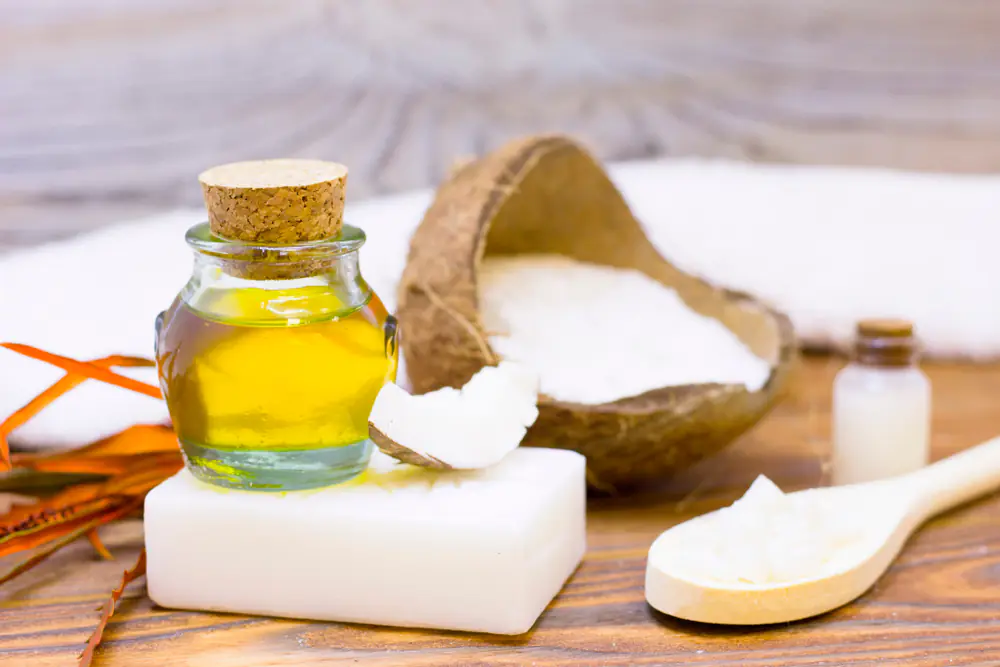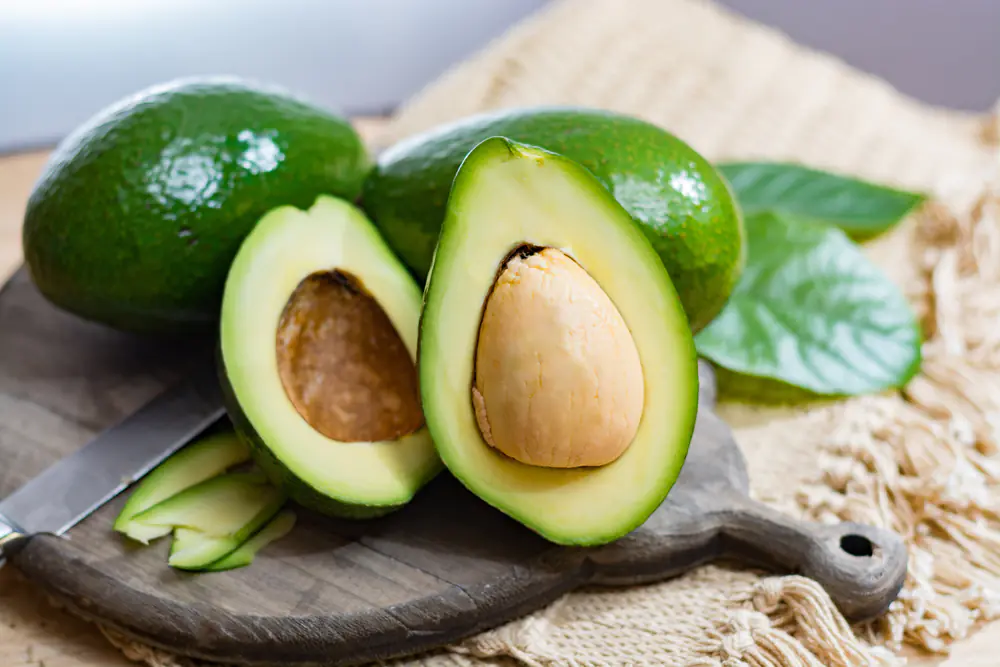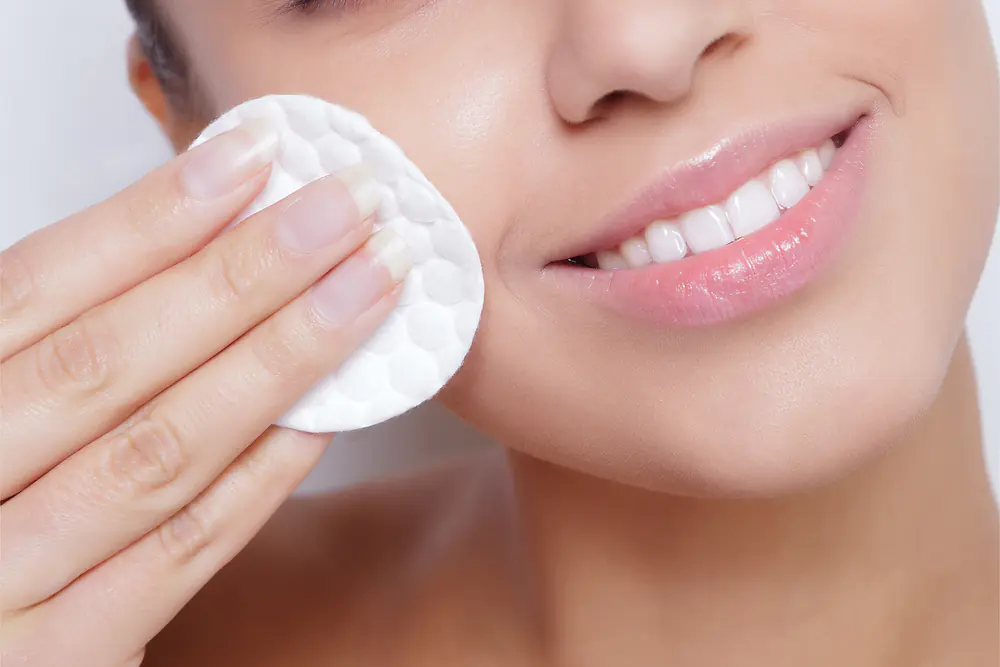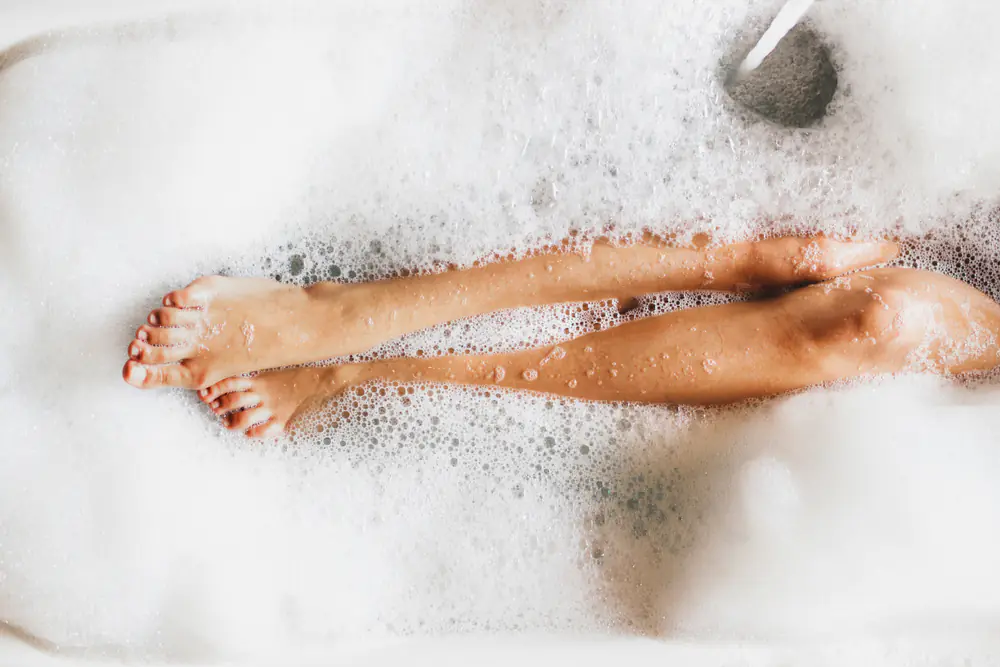During the winter season, our skin becomes drier than usual. Humidity drops during this period. Using natural oils helps reduce dryness and moisturize the skin. Remember: moisturizing your skin is a daily routine that you should follow if you want to have healthy and beautiful skin in winter.
Keeping your skin hydrated and beautiful in winter requires little effort and consists of simple procedures. Everyone's skin type is different. You must choose a specific natural oil or moisturizer just for you and your skin and use it daily. You can create your own natural skin moisturizer or buy a specific cream and lotion that will keep your skin healthy. Your diet is also important in maintaining moisture on your skin in particular and your body in general during the winter. Drink plenty of water or eat fruits that contain plenty of liquid. You can eat foods with a high percentage of healthy fats, called healthy fats.
Proper nutrition will help moisturize your skin
A proper diet is the easiest way to hydrate your skin. Drinking plenty of water will help you stay hydrated. To sufficiently saturate the body with moisture, it is necessary to eat fruits and vegetables in winter that already contain water. For example, seedless tangerines, grapefruit, peach, mango, kiwi, cucumbers, sweet peppers. Among the greens, the leaves of cilantro, spinach, and basil have a high water content. Also eat foods rich in healthy fats. These include, for example, nuts and avocados. Remember, you are what you eat, so practice eating foods that hydrate your skin.
Use natural oils
Natural oils are generally inexpensive and very effective. If you have natural oils in your kitchen, such as olive oil and coconut oil, you can use them to moisturize your skin.
Olive oil is one of the favorite natural oils of many women, for whom it is the best natural moisturizer for the skin. You can choose any natural oil you like and apply it directly to your skin after showering. Your skin will look healthier and more beautiful. Natural oils are worth it and they are cost effective. If you choose to use a cream or lotion, make sure it contains a rich oil.

During cold weather, natural cosmetic oils such as apricot, almond and peach are best suited for moisturizing and nourishing the skin.
Apricot oil is an indispensable product for saturating the skin with vitamins A, E, F and fatty acids. Suitable for all skin types, but especially for dry and sensitive skin, softening and moderately moisturizing it.
Almond oil is a universal cosmetic product not only for moisturizing the skin, but also for nutrition and regeneration. Ideal for combination skin, it helps to cope with flaking in drier areas - cheeks and the area around the lips, while being well absorbed. It can be used diluted as a facial lotion. This oil is also an effective way to nourish and strengthen eyelashes.
Peach oil contains vitamins A, E, C, B15 and helps moisturize and nourish the skin, improve microcirculation, and maintain skin firmness and elasticity. It is also well absorbed. Successfully used for the skin around the eyes instead of cream and eyelid gel.
Make your own natural moisturizer
Currently, supermarket shelves are lined with a huge number of commercial products with synthetic ingredients that promise not just moisturizing, but complete hydration of the skin. However, they contain parabens and additives that are unsafe for the skin, often causing dermatitis and allergic skin reactions.
Natural cosmetics are considered to be those that contain at least 85% environmentally friendly natural ingredients.
There are many recipes for skin care masks and creams that you can make. Use some of your favorite oil-rich products and create your own moisturizer.
· To prepare the lotion, take two dessert spoons of honey, the same amount of olive oil and mix with a few drops of natural skin brightener - lemon juice, mix thoroughly and apply to a dry area of skin for 15-20 minutes, then wipe with a clean cotton cloth or gauze folded in several layers soaked in warm water. Repeat the procedure as often as possible during the week.
· You can dry avocado and add it to lotion or cream and apply it to dry areas. Leave on for a couple of minutes and then rinse. This is one example of natural hydration.
How to dry an avocado? There is the following method: you need to dry slices 5-6 mm thick until completely dry. The pieces should not bend, but break with a bang. Then, every two weeks, place the avocado in the dryer for a little while longer at the lowest temperature. Store dried avocado in an airtight container in the refrigerator or in a dry place.

· To prepare a mask for mixed skin, take a base from a mixture of equal amounts of apricot and peach oil. To two tablespoons of base, add one drop each of ylang-ylang, neroli, peppermint and lemon essential oils. Soak clean gauze pads with this mixture and apply to your face for 20-30 minutes. Then wipe off with a cloth soaked in warm water.
Don't forget that not only your face needs hydration, but also your hands and your whole body. Maintain healthy hand skin by moisturizing after washing. Use a moisturizing and nourishing hand cream after using detergents; it is also recommended to wear waterproof gloves when washing dishes and while cleaning the apartment.
· To prepare a nutritious mixture as a hand and nail care product, take equal amounts of apricot oil, wheat germ oil and jojoba oil. Add five drops of lemon essential oil to two tablespoons of base, use as a hand cream and rub into the nail plate.
Remember, the best time to apply your favorite moisturizer and oil is at night. During the day, climate and daily activities suck moisture from the skin. Apply moisturizer to your entire body before bed and do so consistently throughout the winter. This is a surefire way to retain moisture.

Use a humidifier
A humidifier is a device that fills the air with moisture and prevents the skin from drying out. Remember that in winter the humidity in the atmosphere drops. This is the cause of dry skin. When you add moisture to the air, you prevent your skin from drying out. Use a humidifier in the place where you spend most of your time: at home or in the office.
Continue to use sunscreen
Sunscreens are meant to moisturize your skin, so continue to use them during the winter season. This is one option you can use throughout the day to hydrate your skin. Some people like to use it with their lotion and moisturizer.
Apart from the cold in winter, we suffer from dry and scaly skin. Skin hydration should increase significantly at this time. Showering too hot will continue to dry out your skin, so use warm water. If you use soap, make sure that its composition is the most natural (oils, extracts of medicinal plants and green tea) and safe.
To exfoliate, use a special product that removes dead skin cells, making it easier for your skin to absorb moisturizers. The cream scrub is not recommended to be used more than once a week.
After a shower or bath, use lotions designed to retain moisture, so make their job easier by using them when your skin is at its dampest.
With dry skin that becomes scaly and flaky, we sometimes feel itchy. Scientists from the Department of Dermatology at the University of Pennsylvania have proven that milk has an anti-inflammatory and soothing effect on dry, itchy skin. To alleviate this skin condition, take a small piece of clean cotton cloth or gauze folded in several layers and dip it in a cup of milk, apply it to the face or other area of dry skin for seven minutes and repeat this procedure at least twice a day. in a week.
Add two glasses of milk and a quarter glass of honey to a warm bath and soak in it like Cleopatra or a movie star.

Oatmeal has been used as a skin treatment for several thousand years. Scientists have proven that it is effective as a moisturizer, cleanser, antioxidant and anti-inflammatory agent for dry and irritated skin.
To make an oatmeal bath, blend one cup of dry oat flour in a food processor or blender until you have a fine powder. In the same way, you can grind oat grains instead of flour. Scatter the mixture into a bathtub with running water, swirling your hand several times to ensure even distribution and breaking up pieces at the bottom, plunge into the bathtub for 20-30 minutes, leaving the heart area above the water. Depending on the degree of dryness of your skin, you can use this oatmeal bath twice a day for a week.
Serbian writer Ivo Andrić argued that “a beautiful face is a silent recommendation,” so the winter season is not a reason to hide your beautiful facial skin behind a scarf. And in winter you can look attractive by skillfully applying simple moisturizing recipes.
Use natural oils and perform moisturizing treatments for your skin. The diet is also useful when you want to keep your skin soft, healthy and hydrated. Eat healthy food and don't forget to drink the amount of water your body needs.
Warm clothing protects our body from the cold, but there is no such option for the face. It is not surprising that in winter the skin experiences stress and reacts to frost and icy winds with redness and peeling. Proper care will help prevent troubles.
- How does your skin feel in winter?
- Basic winter care products
- Moisturizer Review
- Composition of winter moisturizers
How does your skin feel in winter?
Why does skin look less fresh and healthy in winter? There are several reasons.
Low temperature, in accordance with the laws of physics, causes blood vessels to narrow, which impedes normal blood flow. And this slows down metabolism and worsens skin nutrition.
A sharp wind outside, as well as indoor air dried out by heating and air conditioning, lead to accelerated loss of moisture.
The constant temperature difference between street and home is a stress factor for the skin.
During the cold season, we drink less water and more hot drinks, including tea and coffee, which are diuretics, which means they help remove fluid from the body that it already lacks.
The result is dehydrated cells and lipid deficiency. Simply put, the skin's protective reactions and its ability to recover are weakened. It becomes dry, sensitive, pale, prone to redness. Possible overreaction to low temperatures.
These troubles can be easily avoided if you provide your skin with proper care at home.
It is a mistake to think that in winter the main thing for the epidermis is nutrition; in cold times, skin of any type needs much more hydration and protection.
Features of winter skin care
Below is a list of rules that should be followed when switching to winter time.
Gentle cleansing: no “rub your face properly”, no “creaky” feeling. Use only gentle sponges, delicate gels and mousses.
Alcohol-free physiological tonic: There is not enough strength to correct the acid-base balance in dehydrated tissues, so the skin will have to help restore pH after washing.
Moisturizing cream: Apply it an hour before leaving the house. Then the product of any texture will have time to be absorbed, and only a light film will remain on the face, which will insure the skin’s own hydrolipid mantle.
Dust: the tandem “foundation + loose powder” will soften the “traumatic” effect of temperature changes.
Night care: For all skin types, a moisturizer with hyaluronic acid, algae and aloe extracts, and peptides is ideal.
Shown in severe frost refusal of deep invasive salon manipulations (peeling, laser correction, dermabrasion). When damaged, the skin secretes ichor - a greasy protective cream cannot always be applied after the procedure, and it is undesirable to go out into the cold without it.
Basic winter care products
Foam, milk, micellar water - for cleansing.
Protective nourishing cream. In moderately cold temperatures (up to -10 degrees Celsius), use a dry skin cream with oils and a small amount of moisturizers.
Cold cream or protective balm will also come in handy, but only for a short time in severe frost.
Cleansing
Cheat sheet for different skin types:
- gentle foams and gels are recommended for owners of problematic, oily and combination skin;
- for those with dry skin, milk or micellar water is suitable, and all this should be washed off with water - mineral or bottled.
After washing, do not forget to treat your facial skin with tonic.
Hydration
A cream with panthenol, allantoin or bisabolol will come in handy. It’s good if it contains lipid-replenishing components - they form a thin film that will create a reliable protective barrier for the epidermis.
Nutrition
Products with a thick, nourishing texture for all skin types are best applied in the evening. Look for hyaluronic acid, algae extract, and aloe juice in the composition.
Mature skin is advised to continue care using the usual night cream - it contains enough hydrofixing agents.
A nourishing cream with natural oils is good for dry skin in winter; others will only need it if you spend a lot of time in the cold.
Protection
Apply a foundation over your morning moisturizer, preferably with SPF, to further protect your skin.
A special dense cream on an anhydrous basis with a barrier protection function - with a significant content of natural oils - is needed only for the period of stay in the cold. It’s better to wash it off at home.
Guided by the advice of cosmetologists to choose a cream according to your skin type, we give recommendations on moisturizing.
Fat, problematic
- Twice a day, use a fluid with moisturizing and sebum-regulating components.
- Make masks with a moisturizing and soothing effect three times a week.
Dry
Use formulas with hydrofixatives and lipid-replenishing components (vegetable oils, ceramides).
Combined
- Apply classic moisturizing creams with oils to the dry U-zone.
- For an oily T-zone, light hydrating gels and fluids are more suitable.
We also saved a couple of valuable recommendations on this matter.
- Avoid antibacterial soap and hot water.
- Try to make water procedures contrasting.
- Replace regular shower gels with moisturizing ones.
- Choose body creams and balms with hydrofixatives - they retain moisture in the intercellular space at the level of the deep layers of the skin.
Moisturizer Review
Cleansing gel for oily skin Purefect Skin Hydrating Gel, Biotherm
Reduces sebum production, moisturizes and mattifies the skin.
Milk for dry and sensitive skin Gentle Cleanser, SkinCeuticals
The formula with orange oil and allantoin delicately cleanses, softens and saturates the skin with moisture. Apply to face, massage lightly, remove remaining texture with a damp cloth.
Micellar water with oils, Garnier
The two-phase formula, enriched with oils, is suitable for all skin types. Removes dirt and makeup well, moisturizes and soothes the skin.
Rich cream “Dynamic hydration Aqualia Thermal”, Vichy
The product based on hyaluronic acid and thermal water is suitable for any skin type. Refreshes and provides a feeling of comfort.
Cream-gel for normal and combination skin Aquasource Cream-Gel Normal Skin, Biotherm
Like all products in the Aquasource line, it is enriched with hydrofixatives, “sealing” moisture in the skin, giving it radiance.
Moisturizing, mattifying, sebum-regulating emulsion Effaclar Mat, La Roche-Posay
Thanks to a component called Sebulyse, in addition to moisturizing, it mattifies the skin for 8 hours and helps tighten pores.
And I would also like to remind you that it is best to store cosmetics in a closed cabinet in a room at a temperature no higher than +30˚C.
A winter moisturizer should have a formula that combines two main types of hydrofixing agents.
The foundation + loose powder tandem will soften thermal shock when there is a difference in temperature. © iStock
Attract water:
- hyaluronic acid or peptides;
- glycerol;
- algae extracts;
- aloe vera.
Seals out moisture:
- squalane;
- antioxidants (green tea and grape seed extracts, vitamin E, licorice root);
- shea butter, shea butter, almond;
- silicones (only in morning cream!).
The following are welcome in protective and nourishing creams:
- natural oils (not mineral!);
- silicones;
- panthenol, allantoin or bisabolol.
As for wax and lanolin, it is best to avoid them.
In winter, our skin dries out. Multilayer clothing, temperature changes, cold winds and heaters, which “steal” precious moisture from the skin, and it reacts with redness and increased dryness. Professionals know how to deal with this at home and in the salon.
Cosmo recommends
No matter how carefully we take care of our body, almost all of us have dry and more sensitive skin in winter. There is a feeling of tightness. Our specialists are ready to share their knowledge so that you can prevent these troubles and keep your skin soft and hydrated.
THE BASIS OF WINTER CARE
Every morning and evening, be sure to apply a moisturizing and nourishing cream to the skin of your hands, face and body (there should be one for each part of the body). In the cold season, this procedure cannot be carried out every other time, as in the summer.
The composition of the selected creams must certainly include oils that make the skin more elastic, and vitamin C - it serves as a natural filter that does not allow UV rays to pass through. Such products will help protect the skin from bad weather and temperature changes, as well as restore its protective properties. In any case, in winter, for home care of face and body skin, it is necessary to use more saturated nourishing creams with rich textures.
Before applying them, it is necessary to do a light peeling to free the skin from the load of dead cells. They accumulate on the surface and impede the flow of oxygen and active ingredients into the deep layers of the dermis. For exfoliation, choose peeling gels or gentle creams with microparticles. “Use products that contain natural acids, they provide instant protection,” recommends Olga Kolesnikova, general director of the Cut & Color salon. Acids perfectly moisturize the skin, even out its texture, neutralize the harmful effects of ultraviolet radiation and increase the effectiveness of other cosmetic ingredients. It is advisable to do peeling once or twice a week depending on your skin type.
RUN TO THE SALON
However, salon procedures are still the most effective. Various wraps wonderfully moisturize and saturate the skin with useful minerals. For example, for thermoactive wrapping, desert soil is used, which contains magnesium, citric acid, copper, zinc, magnesium. During the procedure, minerals are easily absorbed by the skin, moisturizing, nourishing and toning it, maintaining youth and elasticity.
Body wraps with essential oils, chocolate and moisturizing creams also effectively tone and nourish the skin. Thanks to the greenhouse effect during hot wrapping, the moisturizing and nourishing components of the oils penetrate deep into the skin and have maximum impact.
Compositions for thermal mud wraps also moisturize the skin well, stimulate regenerative processes in the body and prevent premature aging of the skin. Such wraps can be combined well with massage and hardware techniques. To achieve maximum effect, a course of wraps is recommended - 2-3 per week, for a total of 10-15 sessions.
Good results for dry skin of the feet and hands are demonstrated by paraffin applications or paraffin therapy. A bath of melted paraffin stimulates regeneration, metabolic processes, the skin becomes more tender and moisturized. “Unfortunately, little is written about this, but paraffin masks for the face are an excellent procedure. Of course, there is a lot of fuss with them, which is why they are rarely used. But an excellent replacement for a paraffin mask is a cream with omega-3.6 acids,” says Ekaterina Nikolaevskaya, cosmetologist at the Time of Beauty clinic. These substances restore the hydrolipid membrane of the skin. Please note: the cream must contain squalene (or squalane).
Beauty studios also offer hand massages with vitamin complexes for deep hydration and healing of cracks. Systematic hand peelings are great for dryness.
You can choose an oil wrap as winter hair care. Thanks to castor oil and a healing mixture of natural essential oils, dry and brittle hair is saturated with missing lipids (fatty acids) and moisture, becoming strong, elastic, silky and shiny, due to the fact that each hair is covered with a kind of organic protective film that keeps the active substances inside . The procedure lasts about an hour. And after it, the curls become obedient, and most importantly, do not become electrified.
To completely revitalize your hair, you need to do 4 to 8 procedures at intervals of two weeks.
Sleeping against wrinkles: 10 simple rules
TRIPLE PROTECTION
1 SUN PROTECTION. In winter, the sun becomes less active, but the skin still undergoes photoaging. Use only those creams, foundations, lip glosses, etc., that have an SPF of at least 15.
2 HYDRATION. Do you like to take a bath? Don't forget about products that perfectly moisturize your skin at any time of the year - essential oils. They can be purchased in specialized stores or ordered online. The main thing here is not to get carried away and not pour out half the bottle at once. Just a few drops are enough (the dosage is indicated on the package), and before adding essential oils to the bath, you need to mix them with a solvent base (for example, almond oil, honey, sea salt). The oil is chosen depending on what effect you want to achieve. For example, for a bath that moisturizes and soothes dry skin, try this recipe: solvent base - sea salt, patchouli oil - 3 drops, cinnamon - 1 drop, chamomile - 5 drops. You can add 2 drops of wormwood.
Alternatively, when taking a bath, simply add 2-3 tablespoons of olive oil to the water. It will soften and protect the skin.
3 LIPS. In winter, it is very important not to forget about your lips. Always carry with you a hygienic lipstick or gloss containing beeswax (it prevents dehydration of the thin, delicate skin of the lips, creates a protective coating, increases the firmness and elasticity of the skin), vitamins A and E (soften the skin of the lips and nourish it with useful components).
Emergency brake
Your skin is thirsty not only in summer, but also in winter. These nourishing and moisturizing creams will prevent moisture from leaving your body too quickly if you apply them after a shower.
- Melting milk from Garnier
- Balm Sos from Nivea
Think high
Olga Kolesnikova, General Director of Cut & Color salon
With the onset of cold weather, it is very important to protect not only the skin of the face and body, but also the hair (which is also a type of skin) from dryness. Otherwise, the hair will be easily electrified, break and be difficult to style. To avoid these problems, you need to make nourishing masks for your hair at least once a week, containing lipids, mineral complexes, plant extracts and proteins.



